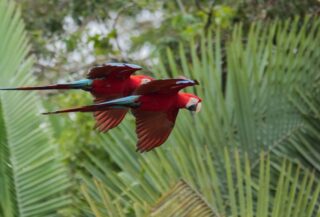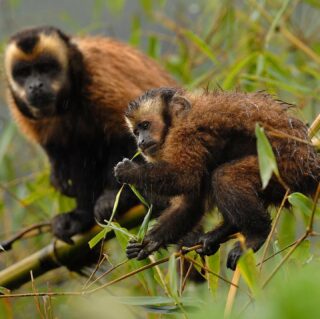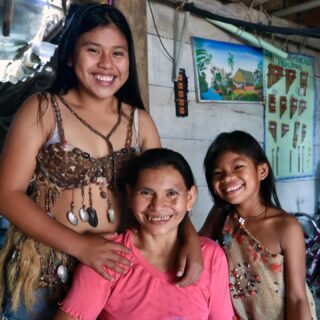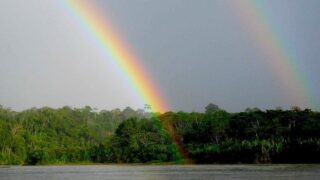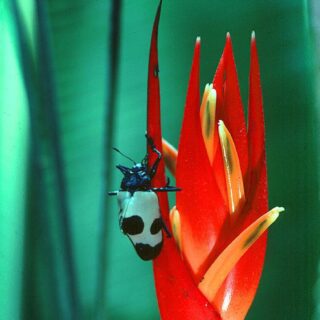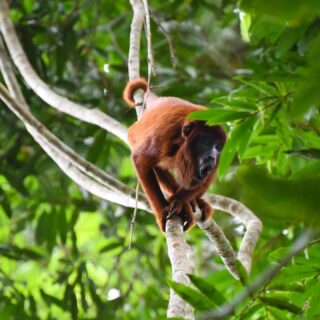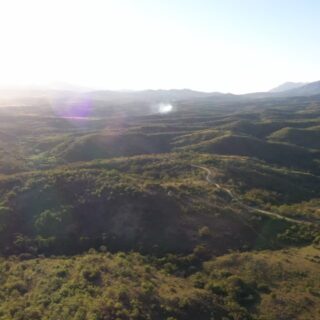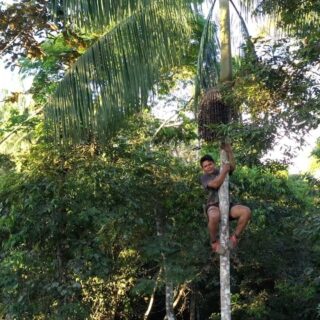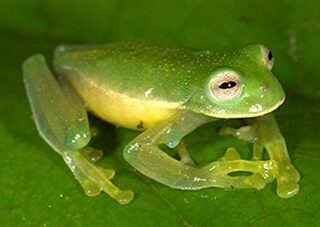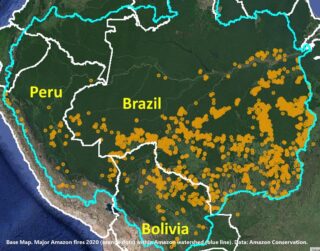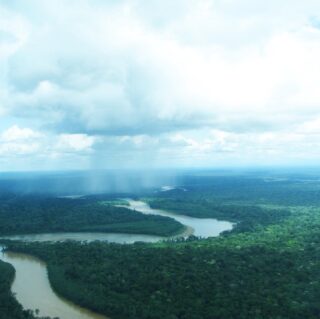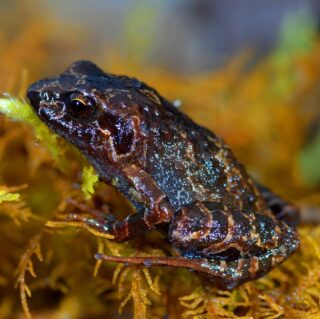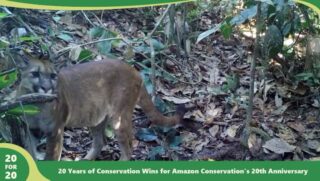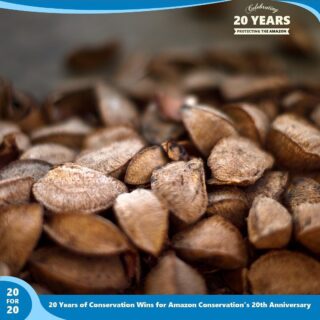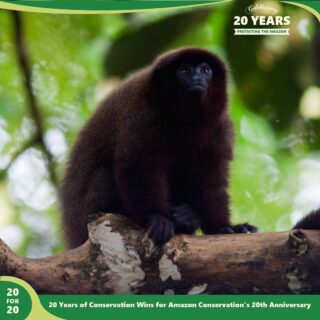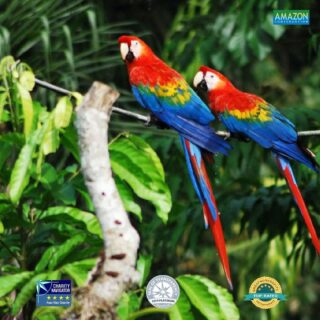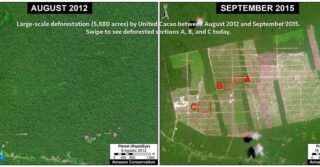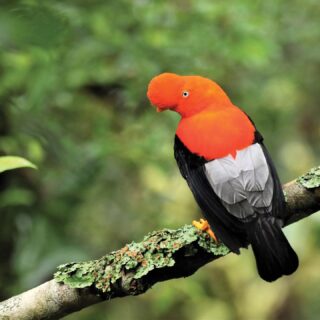 At the end of last year we had a spectacled bear sighting at our Wayqecha Research Station. Two of our staff workers where doing maintenance work in a trail near the station when a strong, big, messy-coated bear slowly approached them. Our staff stood still, nervous, but still. The bear in turn, was quietly chewing a chunk of Bromelia sp. 5 meters was all that separated our staff from that powerful, robust but yet adorable beast.
At the end of last year we had a spectacled bear sighting at our Wayqecha Research Station. Two of our staff workers where doing maintenance work in a trail near the station when a strong, big, messy-coated bear slowly approached them. Our staff stood still, nervous, but still. The bear in turn, was quietly chewing a chunk of Bromelia sp. 5 meters was all that separated our staff from that powerful, robust but yet adorable beast.
The spectacled bear or Tremarctos ornatus is an endangered species that can only be found in a few countries of South America. Although this type of bear is adaptable and can be found in many types of habitats, like rainforests, cloud forests, and even in desert lands, the rapid loss of habitat has been the main threat that pushed this bear species population close to extinction.
Over the past decade or so, conservation programs have made a tremendous effort to protect this animal’s habitat and have contributed to a rebound in its population size. However, numbers are still very low and the spectacled bear continues to be listed under the IUCN Red List.

 Wild orchids are disappearing in Latin America due to over-collection and loss of habitat. Peru alone has lost more than 13 percent of its forest from 1950-1992. Thankfully, scientists, students and local resident naturalists are collaborating to document and conserve wild orchids of the neotropics and their ecosystems. In addition to discovering new orchids, there is a comprehensive orchid inventory monitoring program that provides a baseline for documenting overall ecosystem’s health.
Wild orchids are disappearing in Latin America due to over-collection and loss of habitat. Peru alone has lost more than 13 percent of its forest from 1950-1992. Thankfully, scientists, students and local resident naturalists are collaborating to document and conserve wild orchids of the neotropics and their ecosystems. In addition to discovering new orchids, there is a comprehensive orchid inventory monitoring program that provides a baseline for documenting overall ecosystem’s health.  ACA is pleased to announce a new and exciting project: The Manu Cloud Forest Observatory and Canopy Walkway System.
ACA is pleased to announce a new and exciting project: The Manu Cloud Forest Observatory and Canopy Walkway System.  When one lives at 13,450 ft in the Peruvian Andes, a cup of hot chocolate and a Christmas present have a whole new meaning. On December 20, 2006 our partner organization in Peru, the Asociación para la Conservación de la Cuenca Amazónica (ACCA) organized a Christmas celebration with the children of the Quico community in Cusco.
When one lives at 13,450 ft in the Peruvian Andes, a cup of hot chocolate and a Christmas present have a whole new meaning. On December 20, 2006 our partner organization in Peru, the Asociación para la Conservación de la Cuenca Amazónica (ACCA) organized a Christmas celebration with the children of the Quico community in Cusco.  In August-September 2006, fieldwork at ACA Los Amigos research station by Drs. Joseph Tobias and Nathalie Seddon (Oxford University, UK) added seven new bird species to the Los Amigos list. The new species include the Whitebellied Seedeater (Sporophila leucoptera) and the Whitechinned Swift (Cypseloides cryptus).
In August-September 2006, fieldwork at ACA Los Amigos research station by Drs. Joseph Tobias and Nathalie Seddon (Oxford University, UK) added seven new bird species to the Los Amigos list. The new species include the Whitebellied Seedeater (Sporophila leucoptera) and the Whitechinned Swift (Cypseloides cryptus).  In July Luz Marina Velarde, Director of our Brazil Nut Program, organized a workshop on sustainable management of Brazil nuts in the Madre de Dios region in Peru. Approximately 50 local Brazil nut growers attended the workshop. Delegates from Brazil and Bolivia were also present.
In July Luz Marina Velarde, Director of our Brazil Nut Program, organized a workshop on sustainable management of Brazil nuts in the Madre de Dios region in Peru. Approximately 50 local Brazil nut growers attended the workshop. Delegates from Brazil and Bolivia were also present.  César Morán, an experienced Peruvian environmentalist, joins the ACA family as our new Conservation Director starting this month.
César Morán, an experienced Peruvian environmentalist, joins the ACA family as our new Conservation Director starting this month.  On September 3, 2006, Vanessa Sequeira, 36, a dear friend and former member of ACA was killed in the Brazilian Amazon. She was working on her doctoral research for Costa Rica’s Center for Tropical Agricultural Research. Her dream was to promote programs of sustainable development in the Amazon region. She worked side by side with local communities and helped them develop techniques that would benefit them economically without cutting or destroying the forest. This goal became a priority in her professional and personal life.
On September 3, 2006, Vanessa Sequeira, 36, a dear friend and former member of ACA was killed in the Brazilian Amazon. She was working on her doctoral research for Costa Rica’s Center for Tropical Agricultural Research. Her dream was to promote programs of sustainable development in the Amazon region. She worked side by side with local communities and helped them develop techniques that would benefit them economically without cutting or destroying the forest. This goal became a priority in her professional and personal life.  In 2003, ACA and its Peruvian partner, Asociación para la Conservación de la Cuenca Amazónica (ACCA), launched a grant program to support research in the Amazon region. Since then, the program has granted 90 scholarships. All this has been possible due to the generous support of the Gordon & Betty Moore Foundation.
In 2003, ACA and its Peruvian partner, Asociación para la Conservación de la Cuenca Amazónica (ACCA), launched a grant program to support research in the Amazon region. Since then, the program has granted 90 scholarships. All this has been possible due to the generous support of the Gordon & Betty Moore Foundation. 
